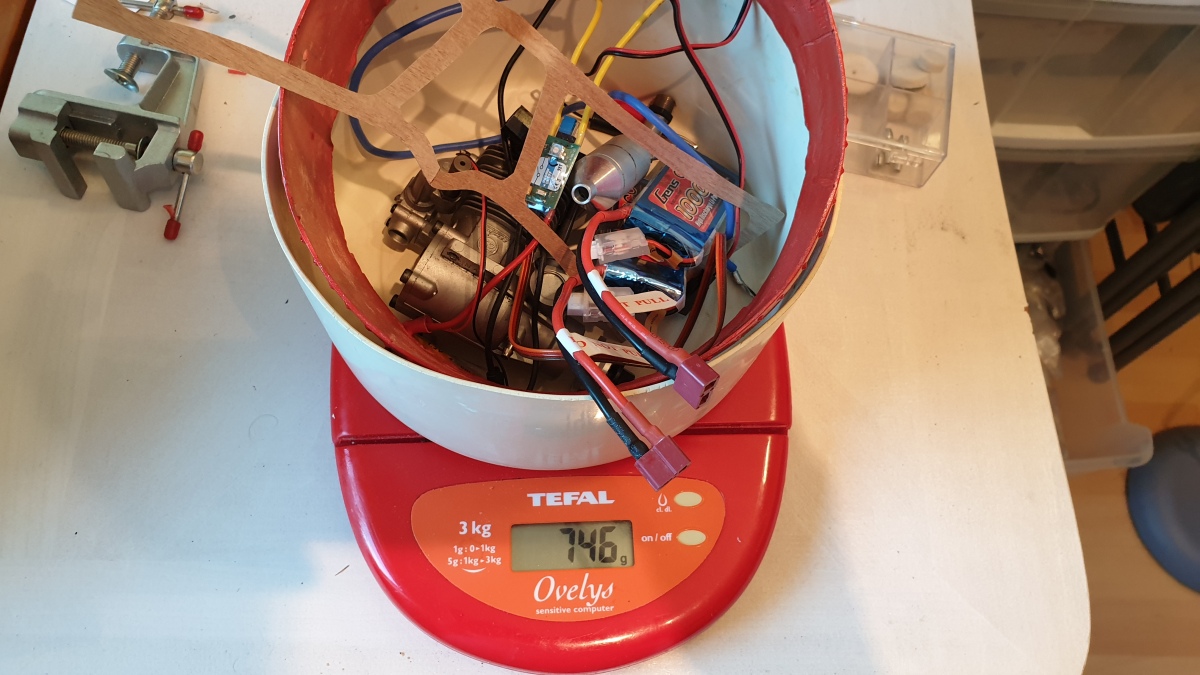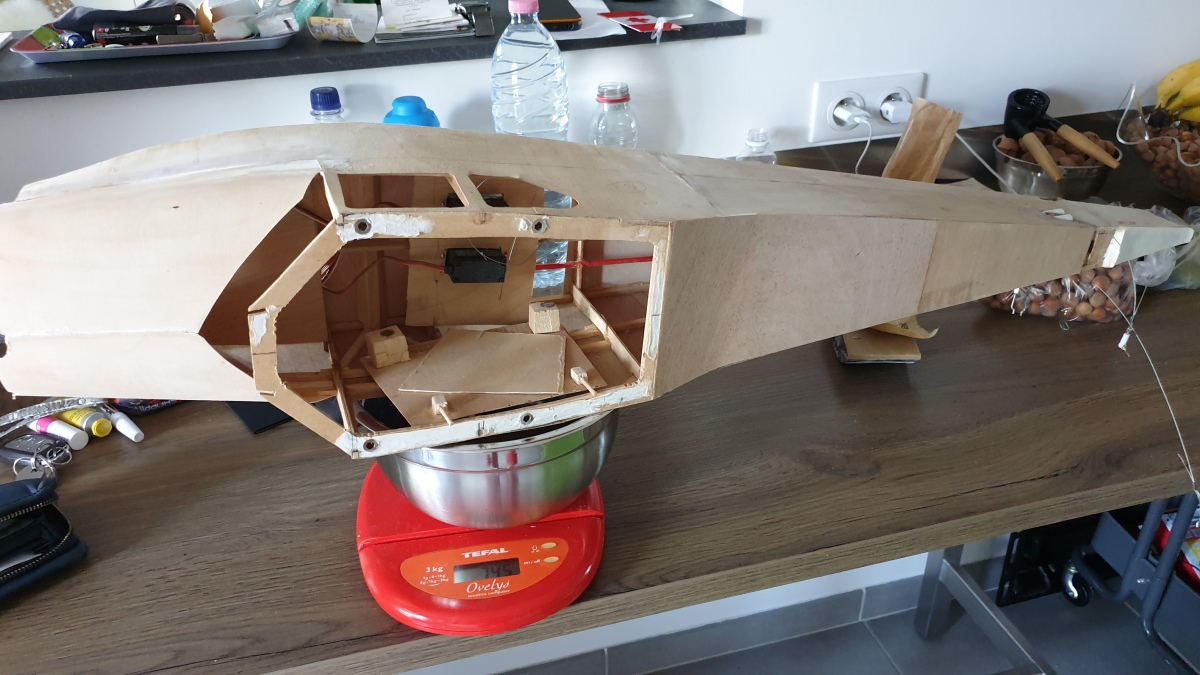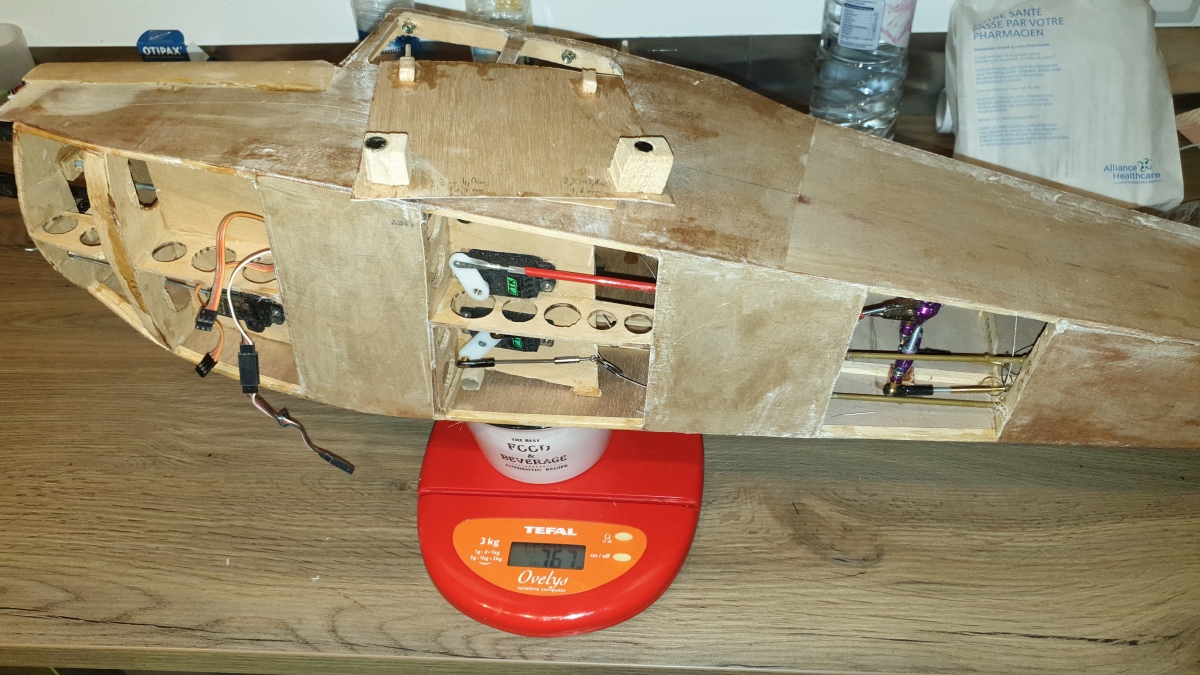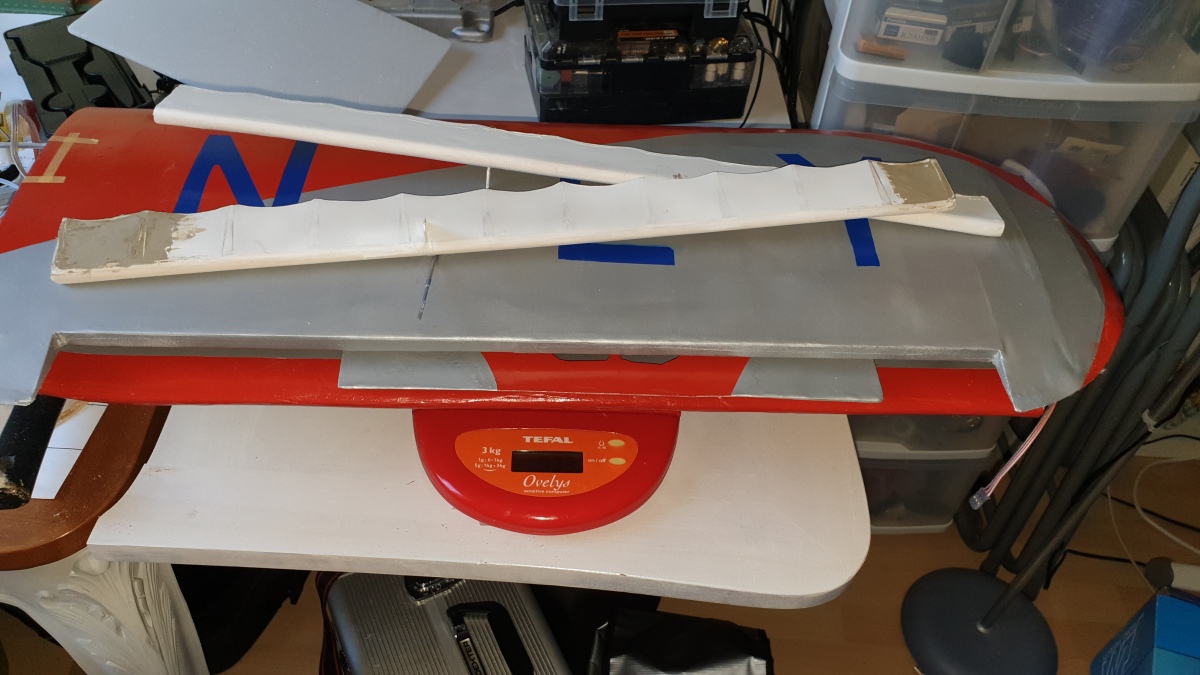I finished wrapping the different faces of the fuselage. As a reminder, I put a layer of nitrocellulose coating, followed by a light sanding to remove the wood fibers and then, I applied a layer of fiberglass at 25 g / m2 glued to the coating.
The fuselage before interfacing weighed 745 g. He took 22g to get 767g.
A light sanding is carried out. As Allalou would say, we look with our fingers to remove imperfections not visible to the eye.
Then pass a layer of G4 varnish everywhere. It was largely dark…
After drying, the fuselage is weighed: Verdict 777 g, i.e. 10 g more.

In total, this step weighed down the fuselage by 32 g, which seems more than reasonable to me. There remains of course, the coating, the filler, the modeling (rivets, hatches, etc.) and the paint to be added.
To get an idea of the total weight of the “beast”, I weighed the different elements.
The finished wing weighs 934 g
The rear tail of the aircraft weighs 130 g
Equipment (engine, batteries, electronics) added 746 g

The propeller weighs 36 g, the wheel fairings 53 g, the receiver 10 g. If we add the fuselage covered and varnished (777g), the total weight is 2686 g. We will have to add to that, the mock-up finish, primer, paint, plus the wheels, the landing gear and the wing masts.
I hope to stay between 3 and 3.5 kg.










